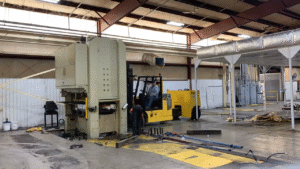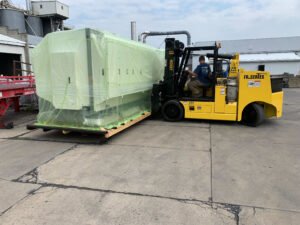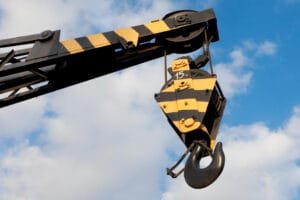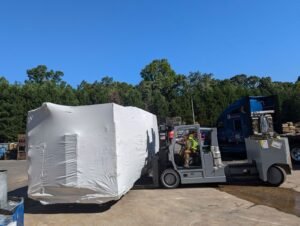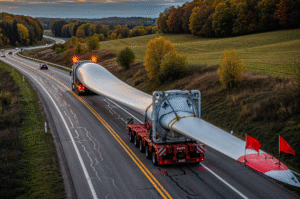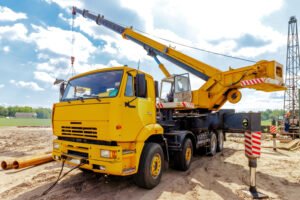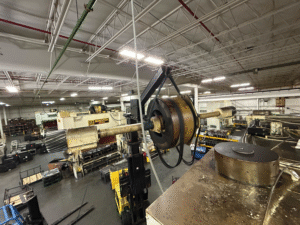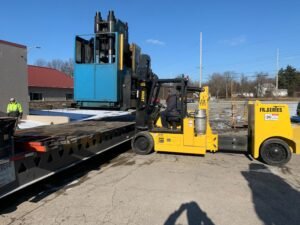Millwrighting plays a crucial role in the industrial landscape, particularly in manufacturing, where it directly influences production processes’ efficiency, safety, and cost-effectiveness. A millwright’s expertise in installing, maintaining, and repairing machinery ensures that operations run smoothly, downtime is minimized, and production costs are kept under control. This article will explore the importance of millwrighting and why it is integral to reducing production costs. We will focus on several key aspects: equipment installation, preventive maintenance, precision alignment, and machinery upgrades.
The Role of Millwrights in Equipment Installation
Precision in Equipment Setup
The foundation of any efficient production process is the precise installation of machinery and equipment. Millwrights are specialists in installing heavy and complex machinery, ensuring that every component is positioned accurately and securely. This precision is vital because even a slight misalignment during installation can lead to significant issues down the line, such as premature wear and tear, increased energy consumption, and frequent breakdowns.
Proper installation by skilled millwrights reduces the likelihood of costly errors that could disrupt production. By ensuring that machinery is installed correctly from the outset, companies can avoid the expenses associated with repairs, replacements, and lost productivity due to equipment failure.
Compliance with Safety Standards
Another critical aspect of millwrighting during equipment installation is compliance with safety standards. Millwrights are well-versed in the regulations and standards that govern industrial machinery installation. Adhering to these standards not only ensures a safe working environment but also prevents costly fines and legal issues that can arise from non-compliance.
By maintaining high safety standards during installation, millwrights help companies avoid potential accidents and the associated costs, such as medical expenses, legal fees, and compensation claims. Additionally, a safe and secure installation reduces the risk of damage to machinery, further lowering production costs.
Preventive Maintenance: A Cost-Saving Strategy
The Concept of Preventive Maintenance
Preventive maintenance is a proactive approach that involves regular inspection, servicing, and repair of machinery to prevent unexpected breakdowns. Millwrights play a crucial role in this process by identifying potential issues before they escalate into major problems. By conducting routine maintenance checks, millwrights ensure that equipment operates at peak efficiency, reducing the likelihood of costly downtime.
The cost of preventive maintenance is significantly lower than the expenses associated with emergency repairs or complete equipment replacement. Regular maintenance by millwrights extends the lifespan of machinery, optimizing the return on investment and reducing the frequency of capital expenditures on new equipment.
Reducing Downtime
Downtime is one of the most significant contributors to production costs. When machinery breaks down unexpectedly, production halts, leading to lost revenue and increased operational expenses. Millwrights help mitigate this risk by performing preventive maintenance tasks, such as lubricating moving parts, tightening bolts, and replacing worn components before they fail.
By minimizing downtime through preventive maintenance, millwrights help companies maintain consistent production levels, meet deadlines, and avoid the financial impact of lost productivity. This proactive approach not only reduces direct costs but also enhances overall operational efficiency.
Energy Efficiency
Millwrights also contribute to reducing production costs by improving the energy efficiency of machinery. Over time, equipment that is not properly maintained can become less efficient, consuming more energy to perform the same tasks. This increased energy consumption translates into higher utility bills and operational costs.
Through regular maintenance and optimization, millwrights ensure that machinery operates at its most efficient level. This includes tasks such as calibrating machines, replacing worn-out parts, and ensuring that all components are functioning correctly. The result is a reduction in energy consumption, which directly impacts the bottom line by lowering operational expenses.
Precision Alignment: Ensuring Optimal Performance
Importance of Alignment in Machinery
Precision alignment of machinery is a critical factor in ensuring optimal performance and reducing production costs. Misaligned machinery can cause a range of issues, including increased friction, vibration, and wear on components. These problems not only lead to premature equipment failure but also result in inefficiencies that increase operating costs.
Millwrights are experts in the alignment of machinery, using specialized tools and techniques to ensure that all components are correctly aligned. Proper alignment reduces mechanical stress on equipment, enhances performance, and extends the life of machinery. This, in turn, minimizes the need for frequent repairs and replacements, leading to significant cost savings.
Impact on Product Quality
Precision alignment also has a direct impact on product quality. Misaligned machinery can lead to inconsistencies in production, resulting in defective products that fail to meet quality standards. This can lead to increased scrap rates, rework, and warranty claims, all of which add to production costs.
By ensuring that machinery is precisely aligned, millwrights help maintain consistent product quality, reducing the costs associated with defects and waste. High-quality products also enhance customer satisfaction and brand reputation, leading to increased sales and profitability.
Vibration Analysis and Correction
One of the key techniques used by millwrights to ensure proper alignment is vibration analysis. By measuring the vibration levels of machinery, millwrights can identify misalignment issues and take corrective action before they lead to significant problems. Vibration analysis not only helps in maintaining alignment but also provides valuable insights into the overall condition of the machinery.
Correcting alignment issues through vibration analysis reduces the risk of unexpected breakdowns and extends the lifespan of equipment. This proactive approach helps companies avoid the high costs associated with reactive maintenance and emergency repairs.
Machinery Upgrades and Modernization
The Need for Upgrades
As technology advances, older machinery can become obsolete, leading to inefficiencies and increased production costs. However, replacing entire systems can be prohibitively expensive. Millwrights play a key role in machinery upgrades and modernization, offering a cost-effective solution to extend the life and efficiency of existing equipment.
By upgrading specific components or retrofitting machinery with new technologies, millwrights can enhance the performance of older equipment. This approach allows companies to benefit from the latest advancements without the need for significant capital investments in new machinery.
Cost-Benefit Analysis of Upgrades
Before proceeding with machinery upgrades, millwrights often conduct a cost-benefit analysis to determine the potential return on investment. This analysis considers factors such as the cost of the upgrade, the expected increase in efficiency, and the potential reduction in production costs. By carefully evaluating these factors, millwrights help companies make informed decisions that maximize cost savings and operational efficiency.
Upgrades can lead to significant reductions in energy consumption, maintenance costs, and downtime, all of which contribute to lower production costs. Additionally, modernized machinery often offers improved precision and reliability, further enhancing product quality and reducing waste.
Training and Adaptation
Another important aspect of machinery upgrades is ensuring that the workforce is adequately trained to operate and maintain the new systems. Millwrights often provide training and support to ensure that operators and maintenance personnel are familiar with the upgraded equipment. This training is essential for maximizing the benefits of the upgrade and avoiding costly mistakes due to operator error.
By facilitating the adaptation of the workforce to new technologies, millwrights help companies fully realize the cost-saving potential of machinery upgrades. A well-trained workforce is better equipped to maintain and operate modernized equipment efficiently, further reducing production costs.
Real-World Examples of Cost Savings
Automotive Manufacturing Plant
In one case study, a major automotive manufacturing plant was experiencing frequent downtime due to misaligned machinery. The millwright team conducted a comprehensive analysis of the equipment and identified several alignment issues. By realigning the machinery and implementing a preventive maintenance program, the plant reduced its downtime by 30%, leading to significant cost savings and increased production efficiency.
Food Processing Facility
A food processing facility faced rising energy costs due to outdated machinery that was consuming excessive power. The millwrights recommended a series of upgrades, including the installation of energy-efficient motors and the replacement of worn components. As a result, the facility saw a 20% reduction in energy consumption, which translated into substantial cost savings over time.
Chemical Processing Plant
In a chemical processing plant, frequent breakdowns were causing production delays and increased maintenance costs. The millwrights implemented a preventive maintenance schedule and conducted precision alignment of all critical machinery. These efforts resulted in a 25% reduction in maintenance costs and a 15% increase in overall production efficiency.
The Long-Term Benefits of Investing in Millwright Services
Sustainable Cost Reductions
The long-term benefits of investing in millwright services extend beyond immediate cost savings. By ensuring that machinery is installed correctly, maintained regularly, and upgraded as needed, millwrights help companies achieve sustainable cost reductions. These savings can be reinvested in other areas of the business, such as research and development, workforce training, or expanding production capacity.
Enhanced Operational Efficiency
Millwrights contribute to enhanced operational efficiency by optimizing the performance of machinery and minimizing downtime. This efficiency translates into higher production volumes, faster turnaround times, and the ability to meet customer demands more effectively. In a competitive market, operational efficiency is a key factor in maintaining profitability and market share.
Improved Workforce Productivity
When machinery is well-maintained and operating at peak efficiency, the workforce can perform their tasks more effectively. Millwrights play a crucial role in creating a productive working environment by ensuring that equipment is reliable and safe. This not only reduces the risk of accidents but also boosts employee morale and productivity.
The Importance of Millwright Expertise
Millwrighting is an essential component of cost-effective manufacturing and production processes. From the precise installation of machinery to preventive maintenance, precision alignment, and machinery upgrades, millwrights play a vital role in reducing production costs. Their expertise ensures that equipment operates efficiently, safely, and reliably, leading to sustainable cost savings and enhanced operational performance.
Investing in millwright services is not just about reducing immediate expenses; it is about building a foundation for long-term success. The importance of millwrighting lies in its ability to ensure that machinery is installed, maintained, and aligned with precision. By prioritizing the skills and knowledge of millwrights, companies can achieve significant cost reductions, improve product quality, and maintain a competitive edge in the marketplace.

